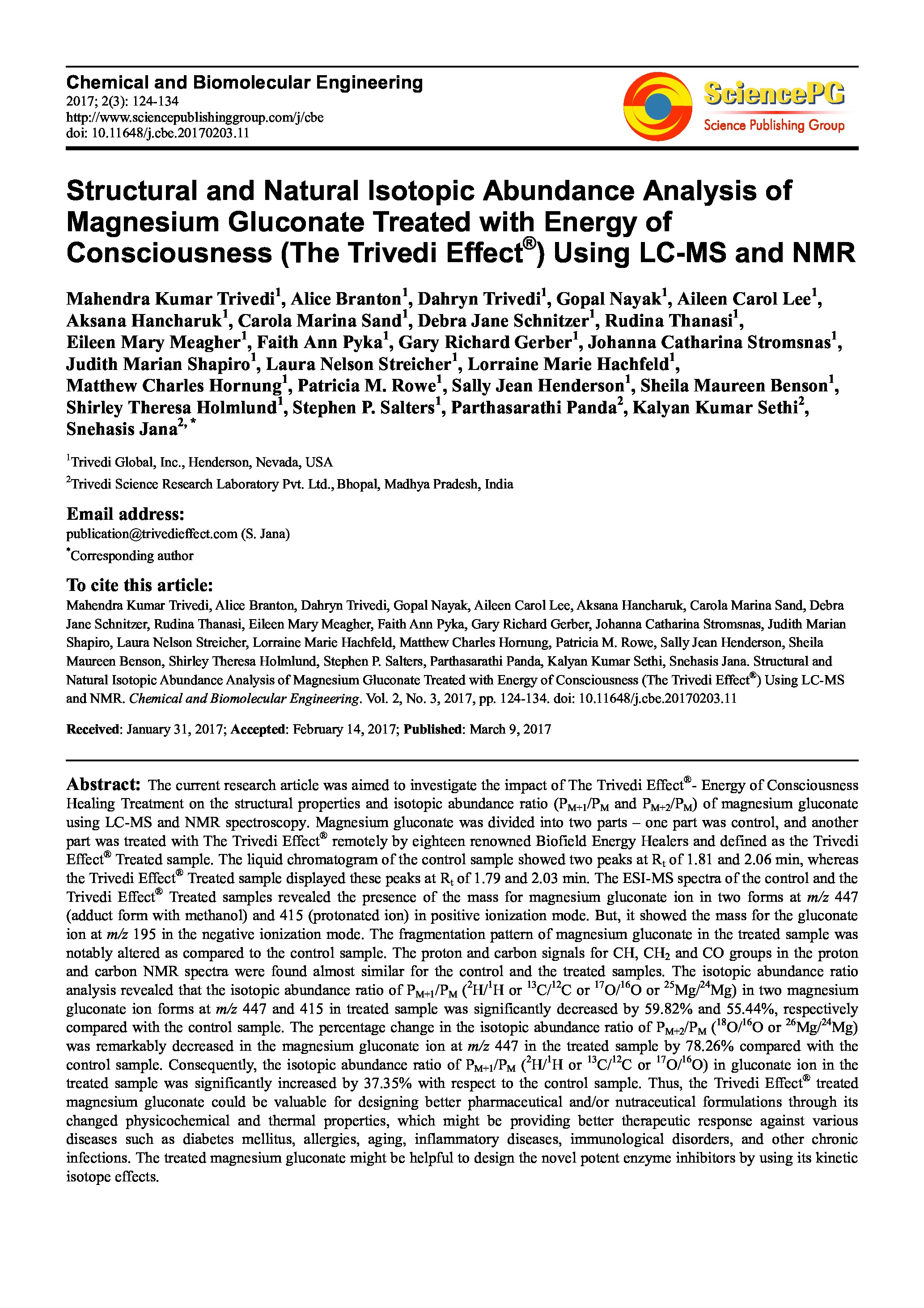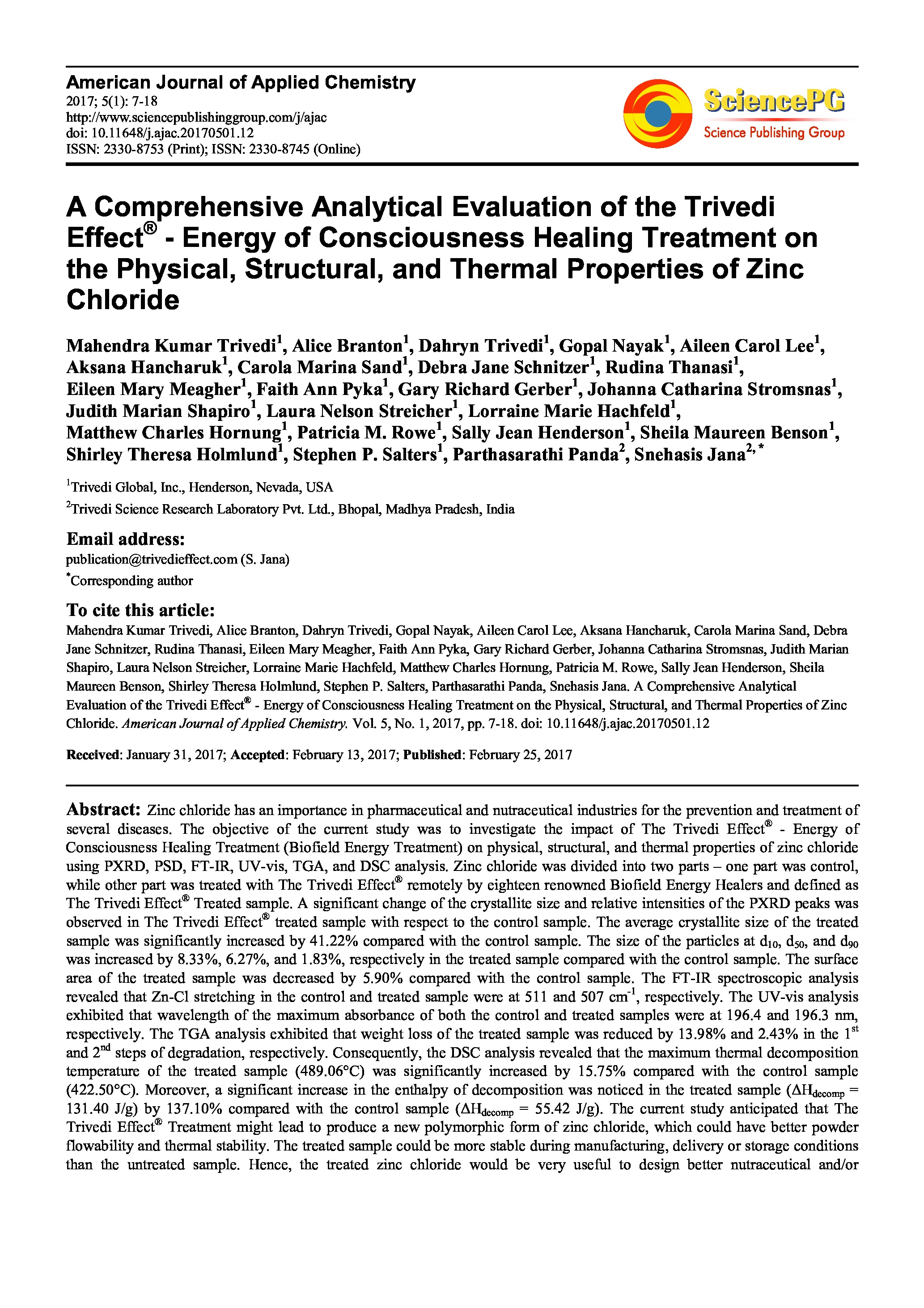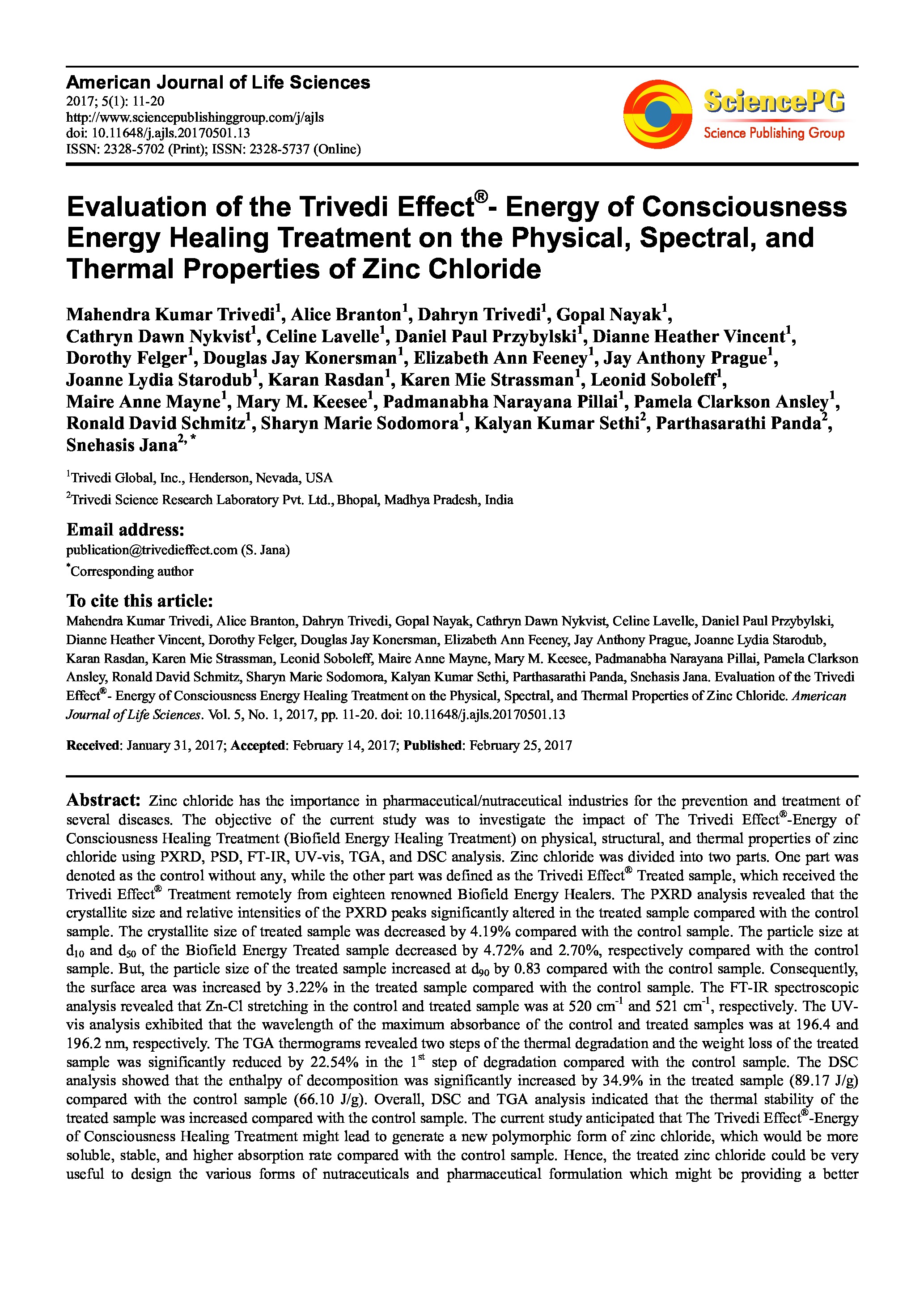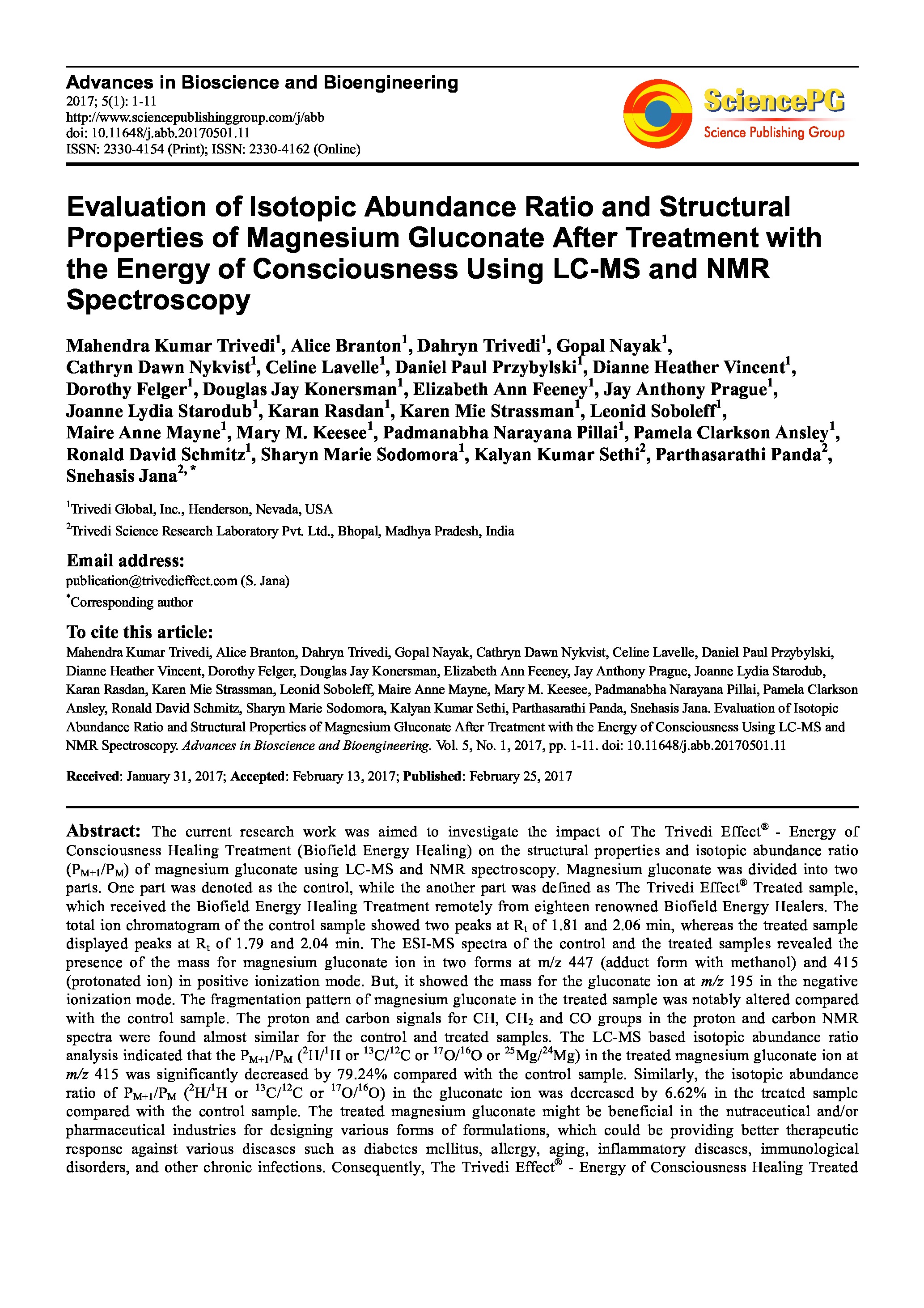Date of upload:
23.06.2017
Co-author:
Alice Branton, Dahryn Trivedi, Gopal Nayak, Aileen Carol Lee, Aksana Hancharuk, Carola Marina Sand, Debra Jane Schnitzer, Rudina Thanasi, Eileen Mary Meagher, Faith Ann Pyka, Gary Richard Gerber, Johanna Catharina Stromsnas, Judith Marian Shapiro, Laura Nelson Streicher, Lorraine Marie Hachfeld, Matthew Charles Hornung, Patricia M. Rowe, Sally Jean Henderson, Sheila Maureen Benson, Shirley Theresa Holmlund, Stephen P. Salters, Parthasarathi Panda, Snehasis Jana
Abstract:
Zinc chloride has an importance in pharmaceutical and nutraceutical industries for the prevention and treatment of several diseases. The objective of the current study was to investigate the impact of The Trivedi Effect® - Energy of Consciousness Healing Treatment (Biofield Energy Treatment) on physical, structural, and thermal properties of zinc chloride using PXRD, PSD, FT-IR, UV-vis, TGA, and DSC analysis. Zinc chloride was divided into two parts – one part was control, while other part was treated with The Trivedi Effect® remotely by eighteen renowned Biofield Energy Healers and defined as The Trivedi Effect® Treated sample. A significant change of the crystallite size and relative intensities of the PXRD peaks was observed in The Trivedi Effect® treated sample with respect to the control sample. The average crystallite size of the treated sample was significantly increased by 41.22% compared with the control sample. The size of the particles at d10, d50, and d90 was increased by 8.33%, 6.27%, and 1.83%, respectively in the treated sample compared with the control sample. The surface area of the treated sample was decreased by 5.90% compared with the control sample. The FT-IR spectroscopic analysis revealed that Zn-Cl stretching in the control and treated sample were at 511 and 507 cm-1, respectively. The UV-vis analysis exhibited that wavelength of the maximum absorbance of both the control and treated samples were at 196.4 and 196.3 nm, respectively. The TGA analysis exhibited that weight loss of the treated sample was reduced by 13.98% and 2.43% in the 1st and 2nd steps of degradation, respectively. Consequently, the DSC analysis revealed that the maximum thermal decomposition temperature of the treated sample (489.06°C) was significantly increased by 15.75% compared with the control sample (422.50°C). Moreover, a significant increase in the enthalpy of decomposition was noticed in the treated sample (ΔHdecomp = 131.40 J/g) by 137.10% compared with the control sample (ΔHdecomp = 55.42 J/g). The current study anticipated that The Trivedi Effect® Treatment might lead to produce a new polymorphic form of zinc chloride, which could have better powder flowability and thermal stability. The treated sample could be more stable during manufacturing, delivery or storage conditions than the untreated sample. Hence, the treated zinc chloride would be very useful to design better nutraceutical and/or pharmaceutical formulations that might offer better therapeutic response against inflammatory diseases, immunological disorders, aging, stress, cancer, etc.




